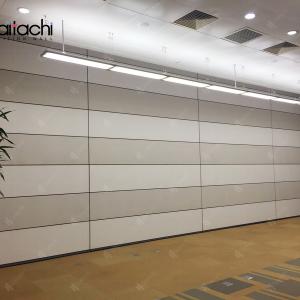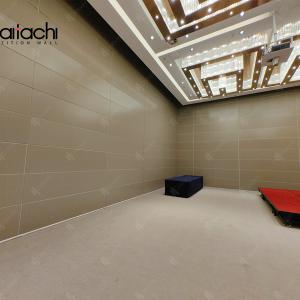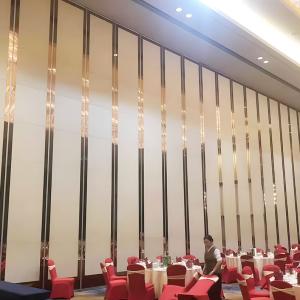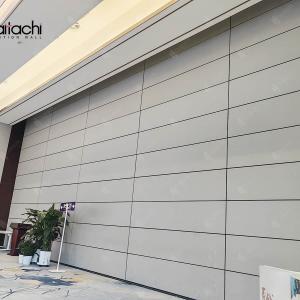Movable Walls are widely used in modern office spaces, exhibition halls, conference rooms, and other areas where flexible space division is needed. These acoustic operable walls allow for quick adjustments to the layout and size of the space as needed. To facilitate the storage and management of these movable partition panels, various panel stacking options have been developed, each with its own advantages and applications. Below are 8 common storage methods for sliding folding partition panels:
Single panel diagonal storage is a common method, suitable for smaller spaces or when there are fewer partition panels. The panels are stored at a slanted angle, which helps to save vertical space while also making the panels easy to retrieve. This method is ideal for environments where quick access to the panels is needed, and it provides a simple, organized storage solution.
In this storage method, the single partition panels are placed on either side of a column or wall support. This method is appropriate for more fixed spaces that do not require frequent movement of the panels. Using the column or wall as a support helps keep the panels stable and maximizes the use of available space.
Single panel center storage involves placing the panels in a central position, often against a wall or on a dedicated rack. This method is ideal for larger spaces, as it helps to concentrate the storage of multiple panels in one location. Storing panels in the center allows for easy identification and access, making retrieval more convenient.
In this method, the partition panels are stored in a space with storage on both sides, utilizing both the left and right sides of the storage area. This method is suitable for environments with larger storage spaces and provides a clear way to organize and categorize the panels. It also allows for easy access to individual panels when needed.
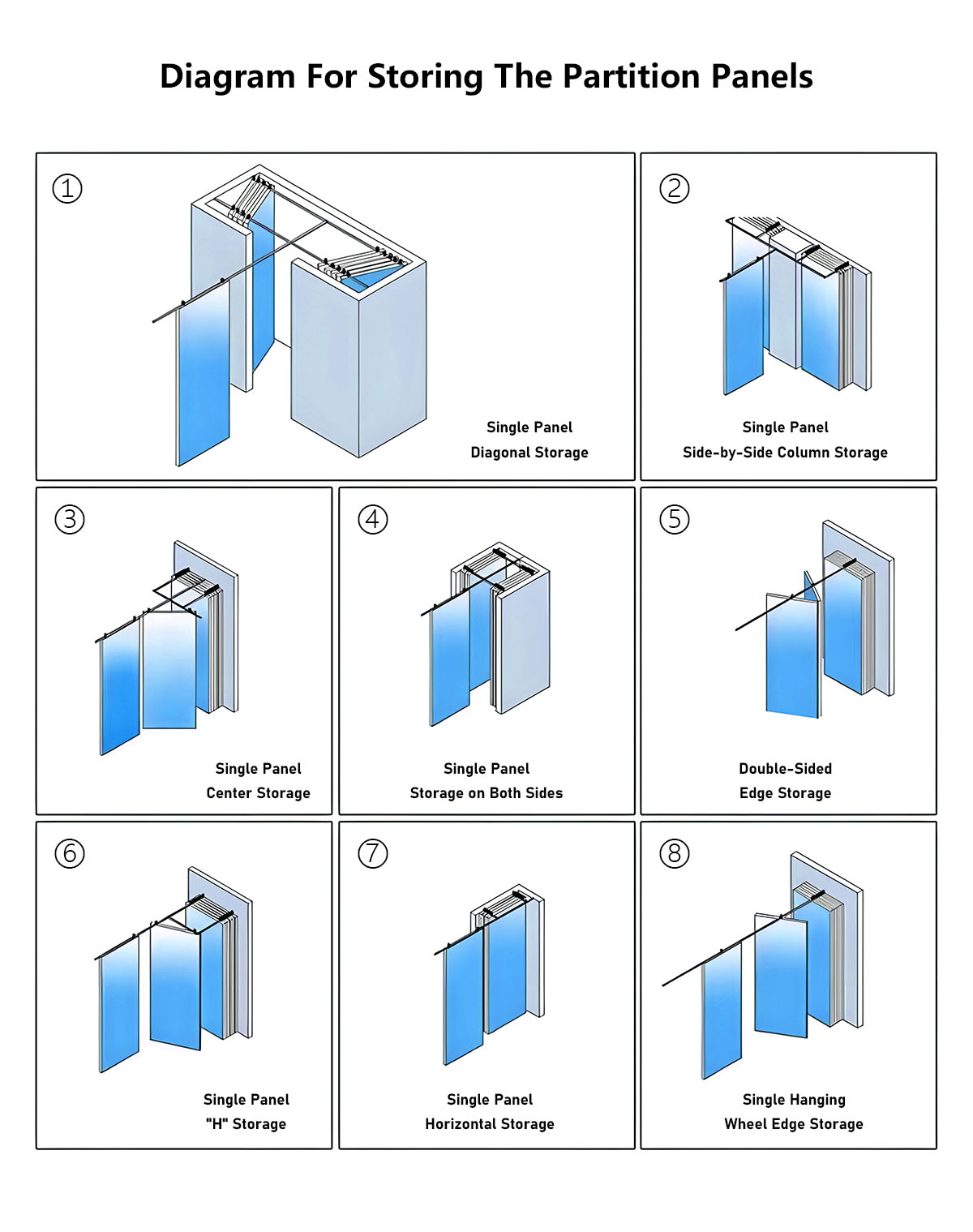
Double-sided wall storage involves placing the panels against two sides of a wall or support surface. This method ensures that the panels are stable due to the double-sided support. It is ideal for spaces that require large-scale storage and helps to prevent the panels from shifting or tilting, providing extra stability.
The single panel H-frame storage method is an innovative solution that involves placing the panels on an H-shaped frame structure. The panels rest between the vertical supports of the H-frame, allowing for efficient storage while ensuring that the panels remain organized. This method maximizes space and makes it easy to access and manage the panels.
Single panel flat storage is one of the simplest and most commonly used methods. The panels are laid flat on a storage rack or the floor. This method is suitable for storing a small number of panels and makes it easy to identify and retrieve each one. However, it requires more horizontal space and is best suited for lighter panels.
Single panel hanging wheel storage involves suspending the panels using a wheel-and-track system. This method saves floor space and allows for easy movement and retrieval of the panels. It is ideal for environments where movable walls are used on a larger scale, as it enhances efficiency and makes storage and access more convenient.
--------------------------------------------------------------------------------
Conclusion
Different partition panel stacking option are suited for different spaces and needs. Choosing the right stacking storage solution not only helps to maximize space but also enhances convenience and safety. Depending on factors such as the number of panels, the size of the space, and how frequently the moving partition panels are used, the appropriate stackng storage method can be selected to improve the efficiency and ease of use of https://www.daitachipartitionwall.com/product/Movable-wall-systems.html target='_blank'>Movable Wall Systems.
